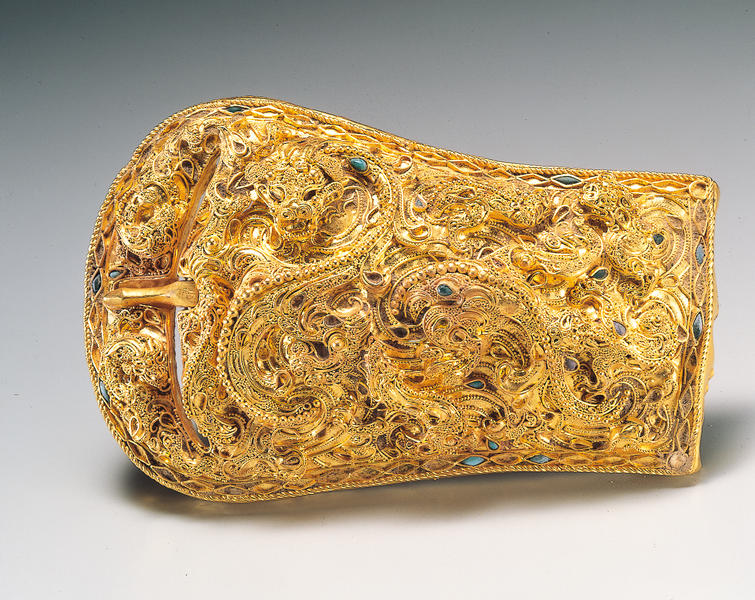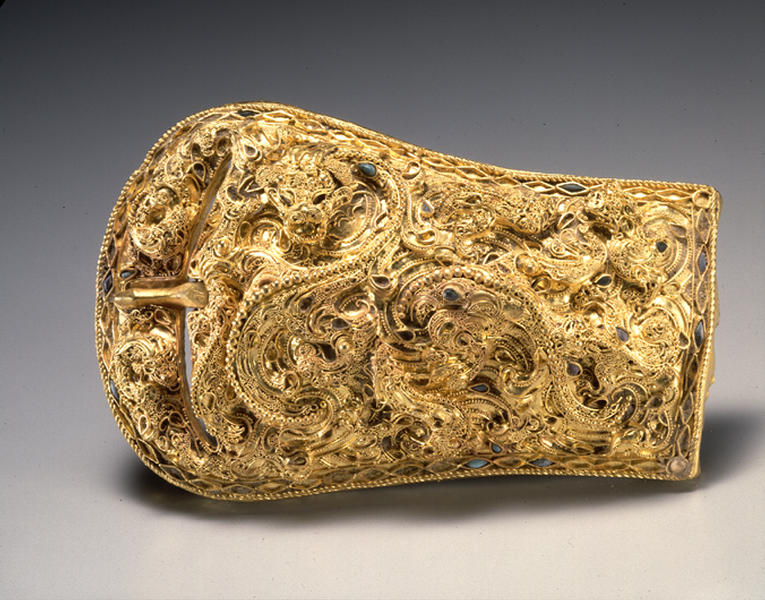Belt Buckle (Daigou)
- China
- China, Han period
- 3cB.C.-3cA.D.
- Gold, turquoise
- D-10 W-5.9
Catalogue Entry
The decoration on this buckle consists of one large dragon and seven small dragons made with gold granules and threads on three-dimensionally modeled gold sheet in repousse. The large dragon has a sinuous body and appears on the surface of water with its belly under the water. The small dragons surround the large one as if they were a pack of baby dragons with their mother, some holding on, some floating nearby. Larger granules are used on the spines of the dragons, and smaller ones for their scales and to form wavy lines of water in combination with gold threads. Tear-shaped turquoises are inlaid, framed by somewhat wider gold strips. On the rounded end of the buckle, there is a crescent-shaped slit to allow the belt to pass through, with a pin on one side to hold the belt. The buckle is framed with twisted gold strip and lozenges inlaid with turquoise, and has small holes to fix to the belt on its flat side.
The granulation method used here was one of the techniques introduced to China from western regions through trade with Northern Nomads from ancient times. The method originated in Western Asia in the 3rd millennium B.C. This buckle features small gold granules, threads of twisted thin strips and sophisticated soldering. Earlier examples in China can be seen in headdresses and earrings from the Eastern Zhou period up through the Han period, and in Western Han buttons excavated in Guangdong Province.*1
During the late Han period in China, buckles of the this type, with a slit to allow the band to pass through and a pin to fasten it, are thought to have gradually replaced the type which was traditional during the Eastern Zhou period, which had a button to attach it to the band and a hook for fastening it.*2
Almost identical examples are found in Lelang, Xinjiang Uighur Autonomous Region, and Yunnan Province. According to Pirazzoli, similar to the situation with silk and lacquer pieces found in the Non-Ula, these buckles seem to have been made in China for vassal princes from the border areas.*3 A slightly later example found from a Western Jin tomb, which is somewhat flat in composition, seems to be a copy of Han pieces.*4

